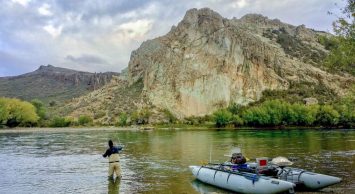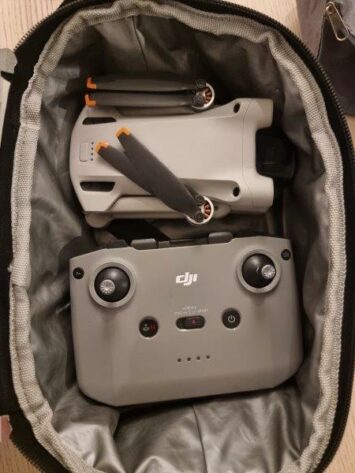Traveling during a pandemic has become the new normal. While some aspects of backpacking remain standard across the globe, how can you safely go explore the outdoors in these trying times?
Quick Navigation
ToggleFirst Things First
By now, we all know that we need to follow the CDC guidelines during the pandemic. Be aware of your surroundings and make sure to always have sanitizer and masks on you at all times.

Make sure you get your insurance sorted whether you go backpacking within your country, or perhaps abroad. Wherever the road may take you, if Covid-19 follows you (or any other illness or accident), having your travel and medical insurance up to date will save you money and time.
Inform yourself of the latest Covid-19 updates and potential changes at your destination. The last thing you want to do is arrive at customs, just to be sent back home again.
Ask yourself what healthcare facilities operate near, or at your destination, just in case things go awry. If you plan to stay within the borders of your own country, double-check that your local medical insurance is up to date. If you plan to take your backpacking abroad, make sure to research the relevant destinations and their healthcare options available to you.
You may, or may not be considered vaccinated depending on how long ago you had your Covid-19 jab. Check that your vaccination certificates are up to date. Before setting out into the wild, you may want to consider isolating yourself for ten to fourteen days.
Work Covid tests and PCR tests into your travel budget. Researching what most countries require upon arrival can help you figure out how many times you may need to be tested. These tests are certainly not free of charge and working this extra expense – that will occur regularly if you are planning to cross borders – into your budget is necessary.
What If …
- You arrive at your destination and suddenly need to get back home?
- You arrive at your destination and test positive for COVID-19?
- The borders are closed, and you are unable to leave?
Ask yourself these questions before embarking on a backpacking trip. What seems insignificant now could potentially cause your entire trip to fall apart.
Make sure you have enough funds saved up on the side. Should you need to quarantine in a foreign place for 14 days, or perhaps stay there because your home country has closed the borders, you need to be prepared. Ensure that you have a source of cash to deal with any pandemic (or even non-pandemic) related hiccup.

So What Are The Basics?
Once you have all your ducks in a row, abide by the rules, inform yourself thoroughly and set yourself up financially…that’s where the fun begins.
Determine where you are going. Are you traveling abroad or staying local?
Then pack all the necessary items such as:
- Passport/ID
- Physical map (not a must, but recommended!)
- Proof of vaccination
- Credit cards
- Some cash
- Your mobile and device charger
Today, many people use their mobile devices to make payments, transfers, and scan or store important documentation. Save it so you can access it offline. You do not want to be stuck, struggling with technology when you are in a remote area with a potential language barrier, merely because your battery died or you are offline.

Once you know where you are going, you need to know where you will be staying. Backpacking does not always require camping in the wild-wild-west. Choosing to stay in cabins or a more luxurious shelter could be beneficial, especially if the weather doesn’t play along.
But if you want to go all-out with the outdoor experience, make sure you have the right tent. Consider factors such as:
- Weight
- Size
- Durability
- The ease with which you can pitch it (and fold it back together again)
If you are traveling with two or more people, decide whether it is better to bring one larger tent or two smaller tents depending on your personal situation. Your sleeping arrangement can make or break your trip experience.
If you are heading out for longer than a weekend, the last thing you want is to be completely exhausted before it even starts. Avoid over-exerting yourself with physical activities prior to tackling the road ahead, as unnecessary exhaustion will bring down the experience.
Where and what you eat can affect your backpacking experience. Of course, most places you will visit or pass through will have shops. You do not need to pack a week’s supply of canned goods at the start – you will only weigh yourself down. If children are joining the trip, consider bringing along some snacks with you. For adults, you can even prepare a simple, daily protein shake that is easily mixed into (you guessed it) a water bottle that you will have on you anyway. This way, you stay on track physically and mentally.
Consider bringing just the essential tools and items for backpacking. The rule of thumb is if you don’t use it at home, you will most likely not need it when you go backpacking.
Items we consider necessary:
- A camping knife: at home, you would generally use scissors to cut everyday items, but when backpacking, a fold-up knife is way more versatile but just as portable.
- A warm jacket: often, one with a hood will do the job. Lightweight jackets will keep you warm and dry and can usually be shoved into small spaces when not worn. Some even come with their own little storage bags attached.
- Proper walking or hiking shoes. Investing in good hiking shoes is a must. Do not attempt to make a ten-day trip with brand new shoes, though. You will end up with unwanted blisters and sore feet. Buy your shoes in advance and walk in them. Allow your feet to get used to the shoes first.
It goes without saying that you also need to pack clothes and personal items. A toothbrush, small hairbrush, and a 2-in-1 shampoo-body wash can go a long way. Then rethink how much leftover space you have left to dedicate to things you might need.
Use the following rule when you pack clothes.
- One on your back
- One in your bag
- One in the laundry
In essence, you need only 3 sets of clothes during the trip. One extra set of workout clothes if you are an active person. If you pack a bar of laundry soap or head to a laundromat, then you can always wash out the item you wore yesterday. This way, you make sure you have something clean to wear the following day.
Conclusion
Less is more. This age-old cliché stays true to its word. When attempting to backpack, especially in a pandemic, be prepared for anything. Should you find yourself in an unfortunate situation, the last thing you want is to lug an additional weight along.
And last but not least: check out the latest Covid travel restrictions. Have certain countries imposed new restrictions? Make a note of flight cancellations, border closures, and local quarantine measures. Certain counties have gone as far as restricting travel to the neighboring state. Stay abreast on these matters, and your trip should go as planned – if planned well.


